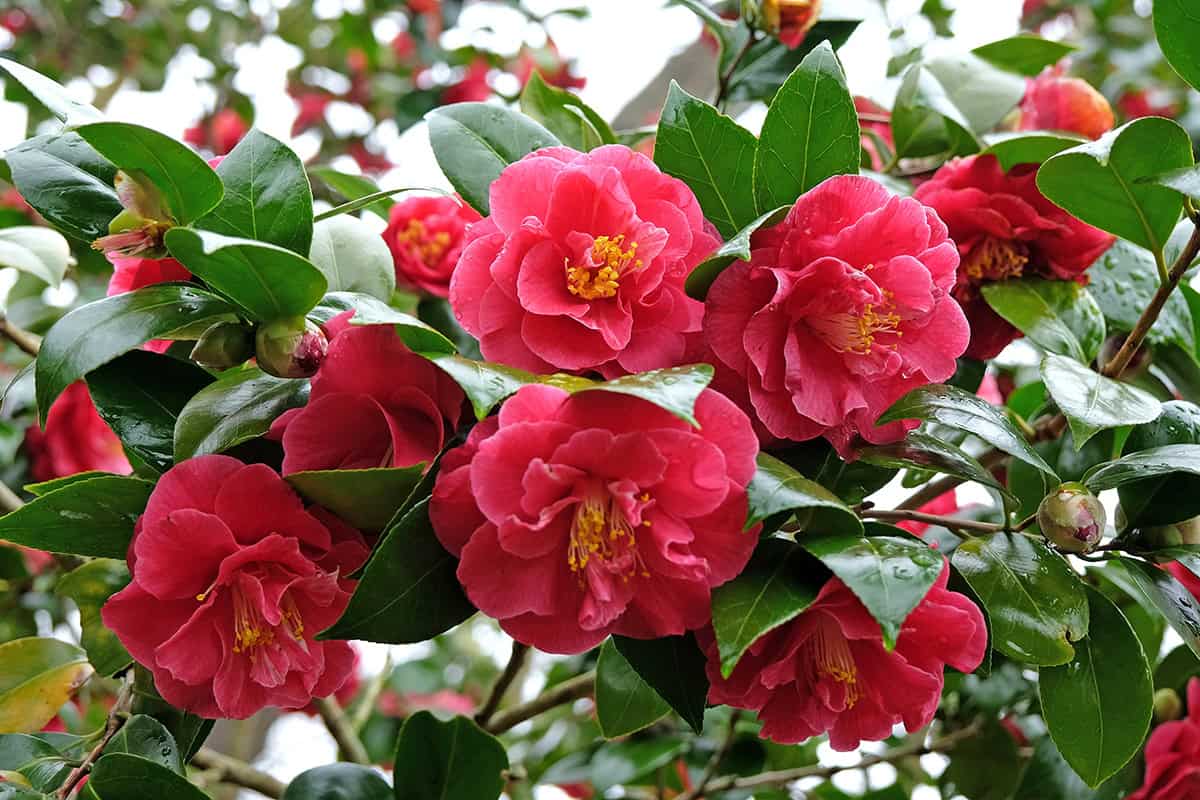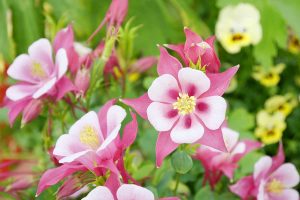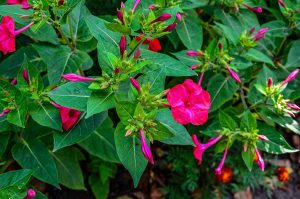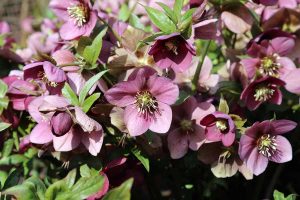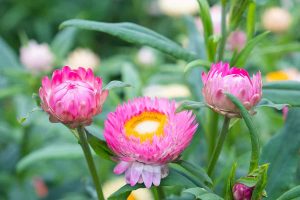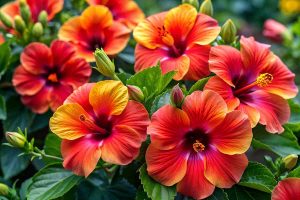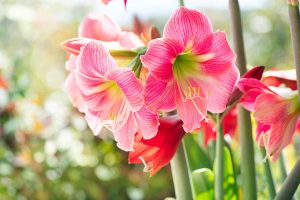If your garden feels empty in December, you’re missing out on some amazing winter bloomers. From cheerful pansies to elegant hellebores, there’s plenty to choose from. Read on to see which flowers to plant now.
Table of Contents
- Flowers to Plant in December
- Camellias
- Hellebores (Christmas Rose)
- Amaryllis (Indoors or Sheltered Outdoors)
- Paperwhites (Narcissus)
- Pansies
- Violas
- Snapdragons
- Sweet Alyssum
- Calendula
- Cyclamen
- Stock (Matthiola)
- Winter Jasmine (Jasminum nudiflorum)
- Wallflowers (Erysimum)
- Primroses
- Ornamental Kale & Cabbage
- Sweet Peas
- Iceland Poppies
- Larkspur
- Anemones
- Ranunculus
- Daffodil Bulbs
- Tulip Bulbs
- Hyacinth Bulbs
- Crocus Bulbs
- Grape Hyacinths (Muscari)
- Snowdrops (Galanthus)
Flowers to Plant in December
Cool weather’s perfect for certain flowers, while others take a break. There’s a lot you can do—hardy annuals, bulbs for spring, even some shrubs that bloom now, whether you’re gardening outdoors or just want a splash of color inside.
Camellias
In mild regions, camellias are a real winter treat. Their rose-like blooms—think reds, pinks, and whites—pop up when almost everything else is asleep.
They’re happiest in acidic, well-drained soil and partial shade. Mulch helps the roots stay cool and moist. Honestly, avoid spots with harsh afternoon sun; it’s just too much for their leaves.
They’ll need a drink during dry spells. After flowering, prune a bit to tidy up. With a good spot, camellias can become huge, long-lived garden anchors.
Hellebores (Christmas Rose)
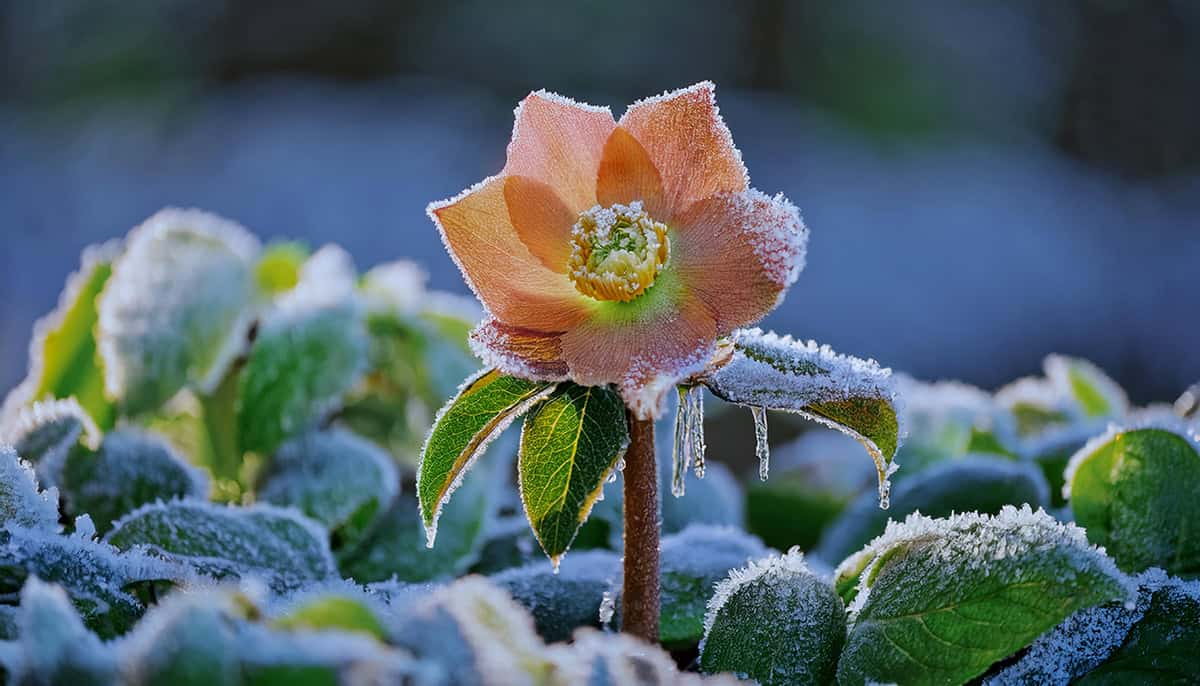
These bloom in late winter, sometimes right around Christmas if you’re lucky with the weather. The flowers nod in shades of white, pink, purple, and green.
Stick them in partial shade, maybe under some trees or bigger shrubs. They’re not fussy—rich, moist, well-drained soil is their thing. Once they’re settled, they’re tough and low-maintenance.
Cut off old leaves before the flowers show up, so the blooms stand out. They’re not bothered by deer or rabbits, which is a relief.
Amaryllis (Indoors or Sheltered Outdoors)
Amaryllis bulbs are a classic for big, dramatic flowers indoors all winter. Start them in pots in early December, and you’ll have blooms by midwinter, usually.
Pick a pot just a bit wider than the bulb, and don’t bury it completely—the top should peek out. Water lightly at first, then keep things evenly moist once you see growth.
In milder zones, you might get away with growing them outdoors in a sheltered spot. After the show, cut back the flower stalk but leave the leaves alone—they’re feeding next year’s bulbs.
Paperwhites (Narcissus)
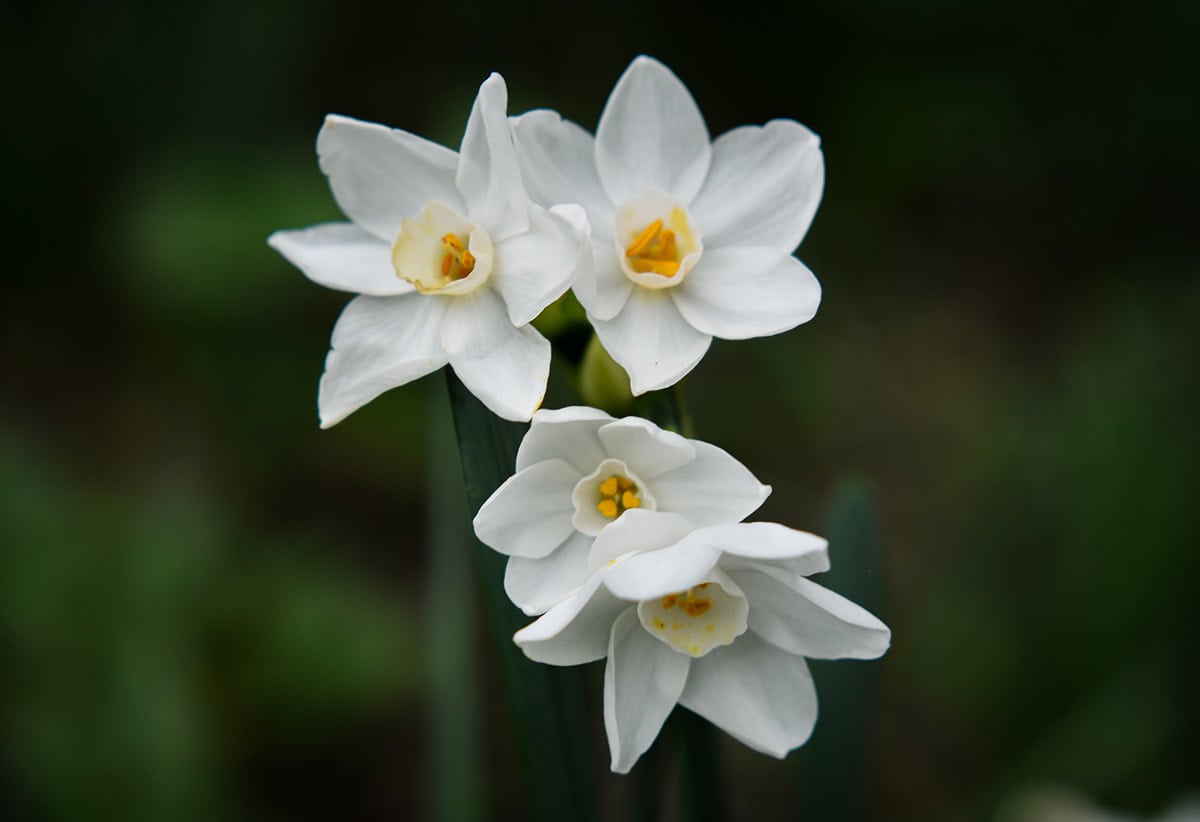
Paperwhites are just about foolproof for winter color indoors. They send up clusters of fragrant white flowers on tall stems.
Soil or pebbles both work—just keep the bulbs above water so the roots can do their thing. They’re fast, often blooming within a month.
Stems can get floppy, so crowd them together for support or add a stake if needed.
Pansies
Cool weather? Pansies love it. Their flowers come in tons of colors, sometimes with those funny little faces.
Give them sun and well-drained soil, whether in beds or pots. Water regularly, but don’t drown them. Deadheading keeps the blooms coming.
Mix with bulbs for a layered look. They shrug off a light frost and perk right back up.
Violas
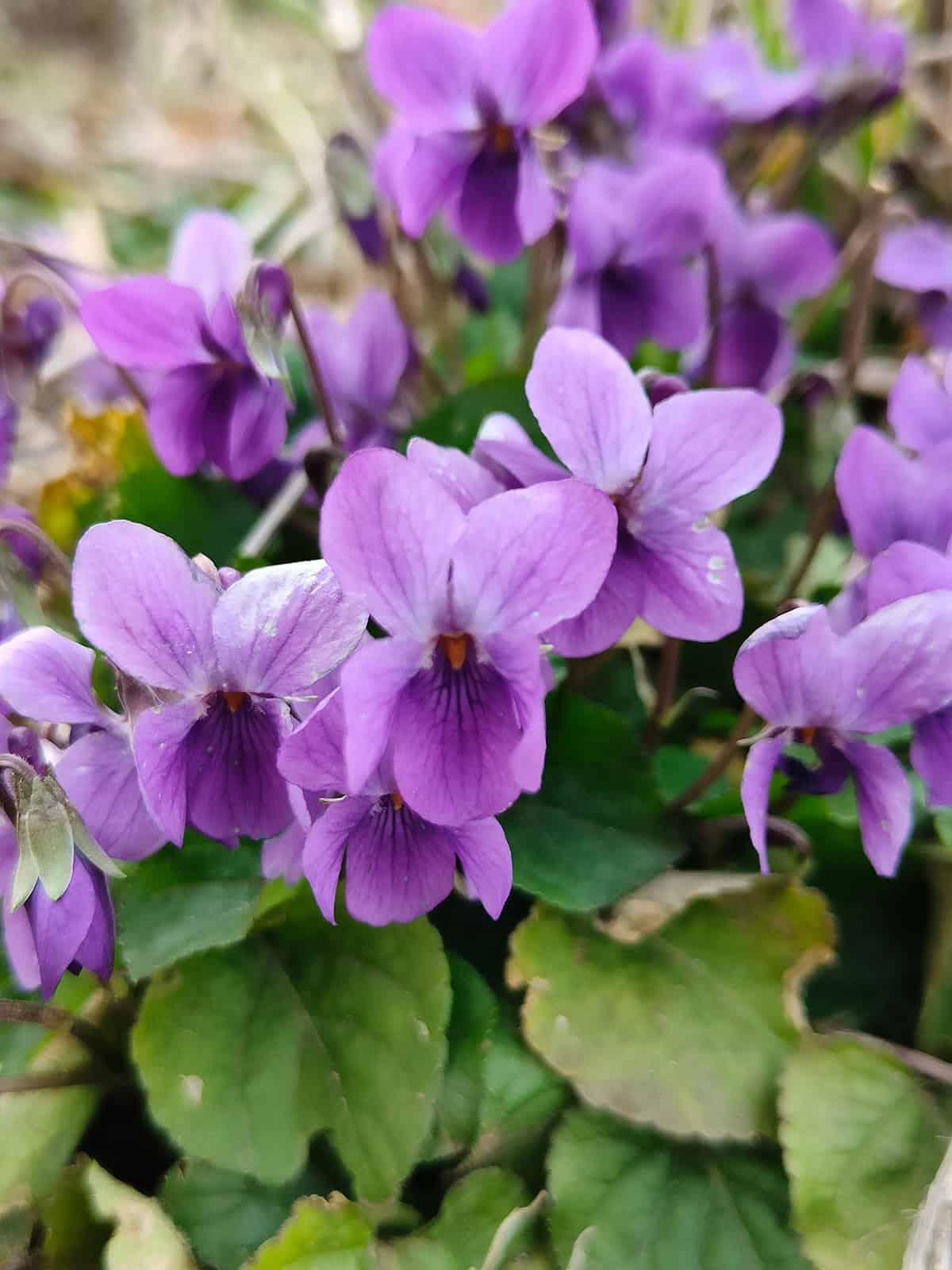
Smaller than pansies, violas often outlast them into winter and spread out nicely as groundcover or edging.
Full sun to part shade is fine, and they like moist but not soggy soil. Deadheading helps them keep blooming.
They’re great mixed with other cool-season flowers, and their compact size works in containers, baskets, or borders.
Snapdragons
Snapdragons bring height and color, with tall flower spikes that don’t mind chilly weather. In mild spots, they’ll even bloom through winter.
Full sun and rich, well-drained soil are best. Water if it’s dry, and taller types might need a stake.
Colors range from soft pastels to bold reds and yellows. Pinching back young plants encourages bushier growth and more flowers.
Sweet Alyssum
Tiny, fragrant flowers cluster on sweet alyssum, and the scent is strongest on sunny days—even in winter.
It’s easygoing: beds, borders, containers, whatever. Sun’s best, but it’ll tolerate some shade. Just make sure the soil drains well.
If it gets leggy, cut it back—it’ll bounce right back. It often reseeds, so you might find new plants popping up next year.
Calendula
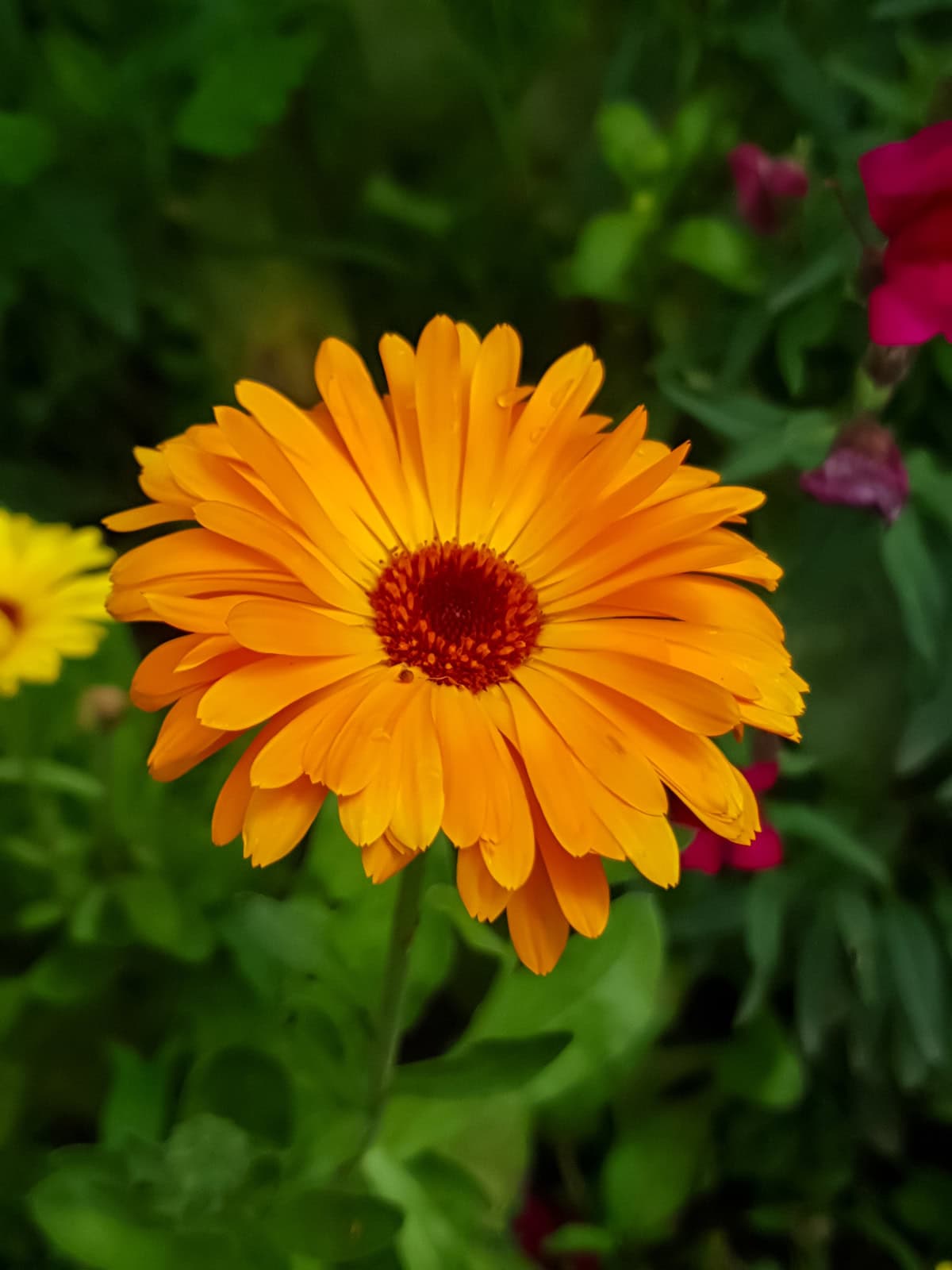
Calendula (pot marigold) adds bright yellow and orange to winter gardens and doesn’t mind the cold.
Plant in sunny, well-drained spots. It’s quick from seed to flower, usually in just a few weeks. Deadheading keeps the blooms coming.
Handy as a cut flower, too. The petals are edible—some folks use them to garnish salads or color dishes.
Cyclamen
Cyclamen are a winter favorite, especially indoors. Their flowers float above patterned leaves in pinks, reds, and whites.
They prefer cool, bright rooms—keep them away from heaters. Water just enough to keep the soil moist, and make sure there’s good drainage.
Outdoors, they do best in mild climates with shade. After blooming, the leaves die back and the tubers rest until next year.
Stock (Matthiola)
Stock is all about the fragrance—spikes of blooms in white, pink, purple, or red fill the air in cool weather.
Full sun and fertile, well-drained soil will keep them happy. Water regularly, and taller types might appreciate a little support.
Great for borders or cut flowers. The scent is strongest in the evening, which makes sitting outside more enjoyable.
Winter Jasmine (Jasminum nudiflorum)
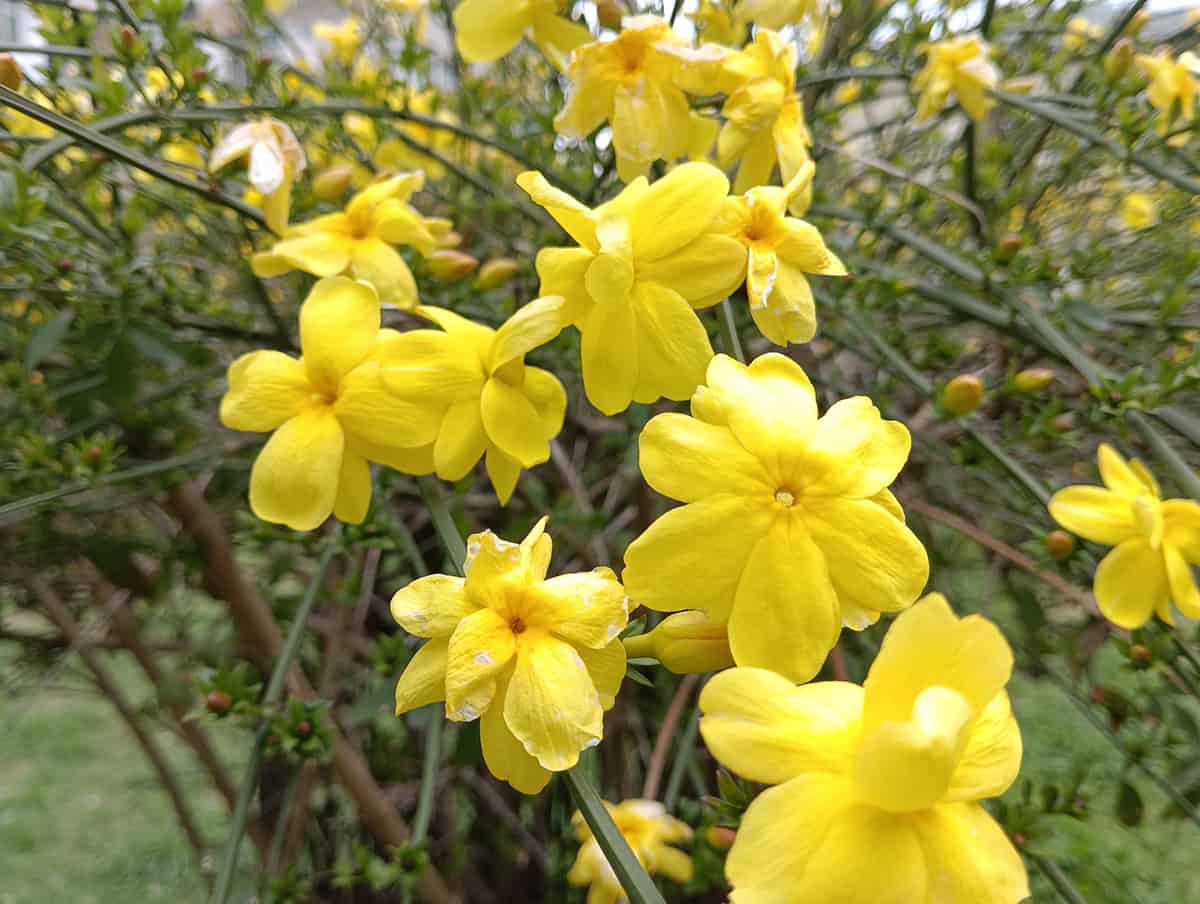
Here’s a shrub that wakes up in the cold: winter jasmine. Yellow flowers open on bare stems, brightening up the gloomiest days.
It’s great trained on walls or fences. Just give the stems a little guidance. It’s not picky about soil but does prefer it well-drained.
Prune after flowering to keep it tidy. Not many other shrubs bloom now, so it’s a welcome sight.
Wallflowers (Erysimum)
Wallflowers are tough, cool-weather bloomers. Their clusters of fragrant flowers come in yellows, oranges, purples, and reds.
They want sun and soil that drains well—no heavy, soggy ground. Water sparingly.
Usually grown as biennials: sow one year, enjoy blooms the next. Deadheading can stretch the season into spring.
Primroses
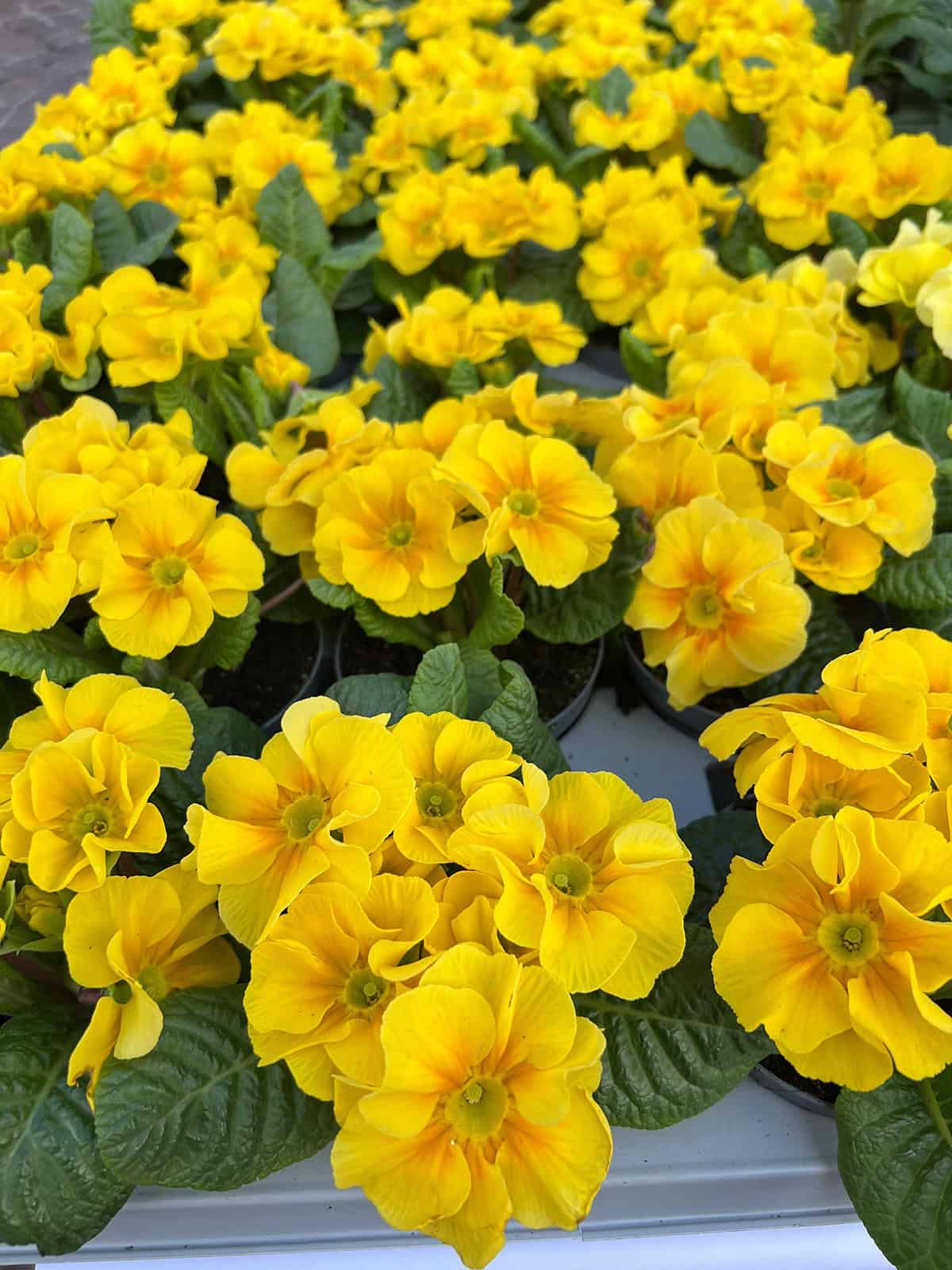
Primroses pop up in late winter or early spring, splashing bright reds, yellows, blues, and whites around when little else is awake.
They like partial shade and rich, moist soil. Mulch helps keep roots cool and damp. Don’t let them dry out.
Great for borders, containers, or naturalized areas. Pick off faded blooms for more color.
Ornamental Kale & Cabbage
Not technically flowers, but ornamental kale and cabbage are all about color—purple, pink, and white leaves get brighter in cold weather.
Full sun brings out the best color. They handle frost and even a dusting of snow, which can make them look even better.
Use them in beds, borders, or pots. If the outer leaves get ratty, just pull them off to keep things tidy.
Sweet Peas
Sweet peas climb and perfume the air with flowers in nearly every color. They’re cool-season stars.
Sow seeds in late fall or early winter if your climate allows. Give them something to climb, like a trellis, and pick a sunny, fertile spot.
Pick flowers often to keep them coming. Watch out for slugs and snails—they love the seedlings.
Iceland Poppies
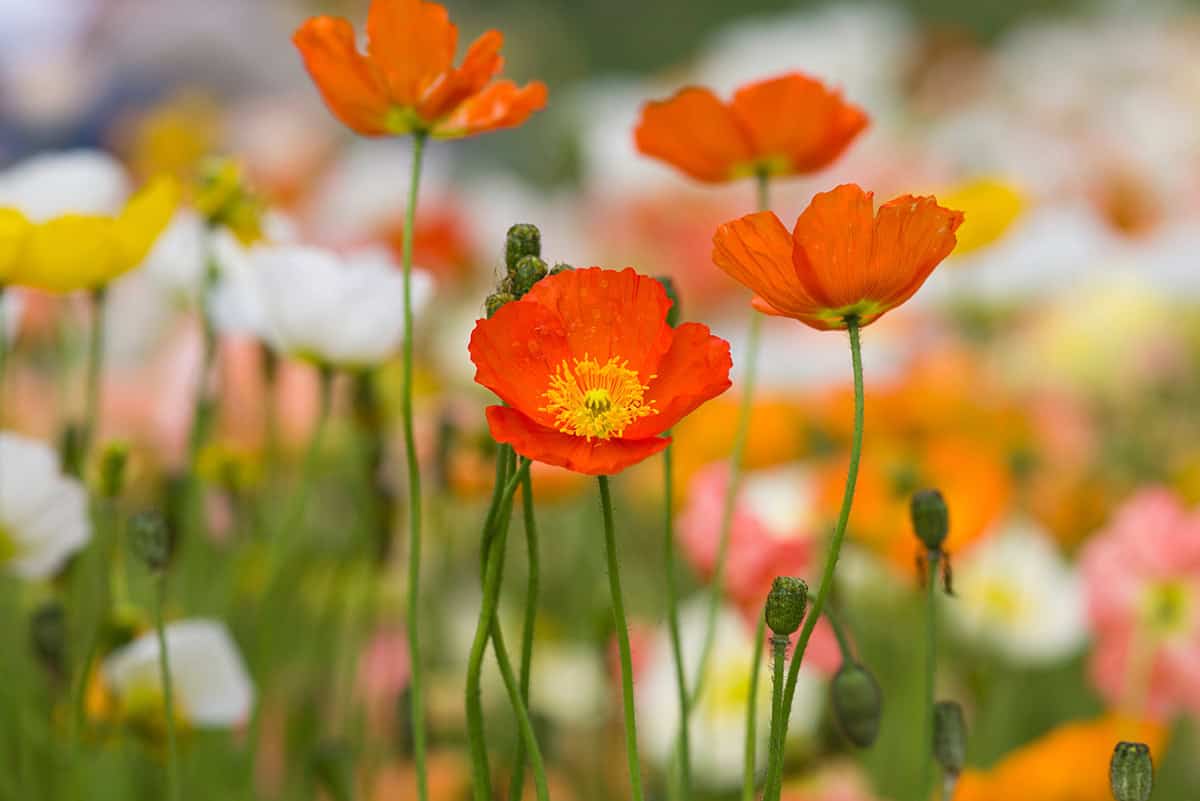
With delicate petals in orange, yellow, pink, and white, Iceland poppies are a winter favorite for their cheerful color and soft, gray-green leaves.
Full sun and well-drained soil are best. They hate heat but thrive in the cold. Sow directly outdoors for best results.
They’re good as cut flowers if you pick them early in the morning. The stems are fragile, so handle with care.
Larkspur
Larkspur sends up tall spikes of blue, purple, pink, or white flowers—perfect for adding height in cool weather beds.
Sow seeds directly in fall or early winter. They want sun and fertile, well-drained soil. Thin seedlings so they have room.
Stems might need staking if it’s windy. Heads up: larkspur is toxic if eaten, so keep it away from kids and pets.
Anemones
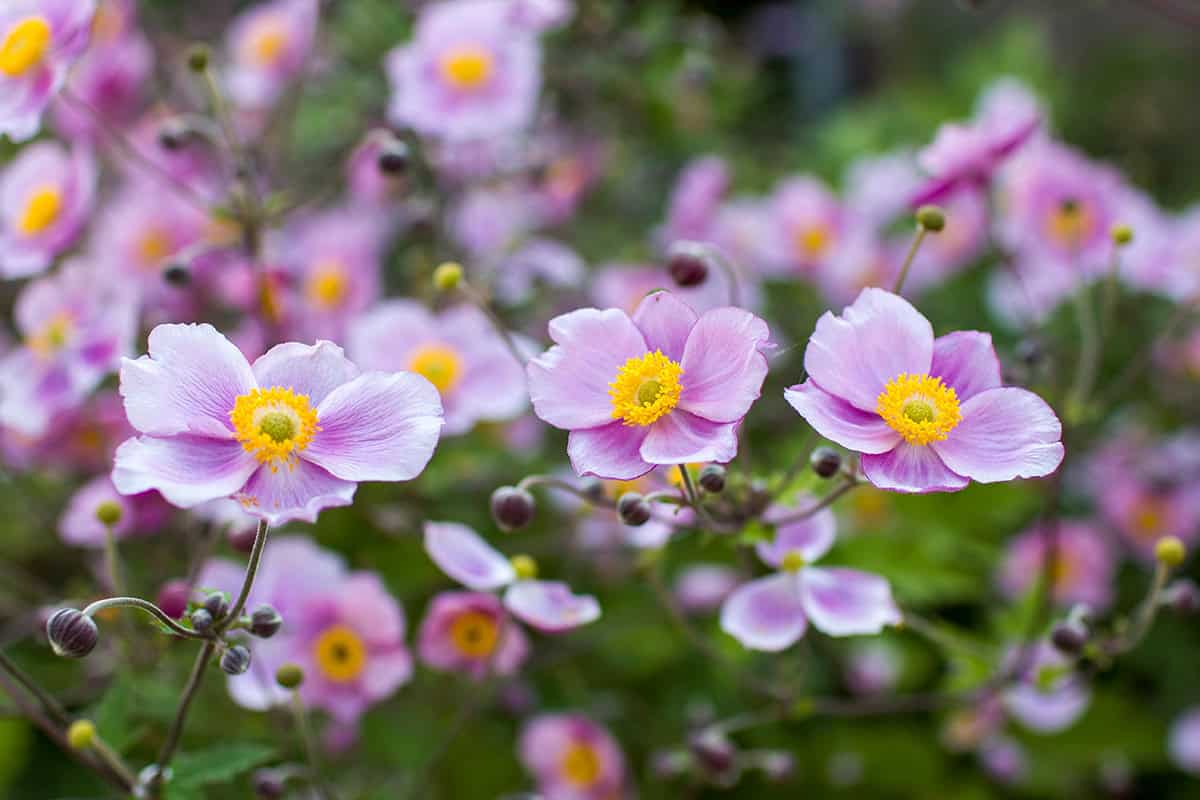
Anemones show off in late winter or early spring, depending on when you plant. The flowers come in bold reds, blues, and purples.
Plant tubers in well-drained soil with sun or light shade. Soak them before planting for faster sprouting. Water regularly while they’re growing.
Great for borders, pots, or cut flowers. In mild climates, they’ll often come back year after year with barely any effort.
Ranunculus
Ranunculus brings bright, rose-like blooms—favorites for bouquets and garden displays.
Plant corms in sunny, well-drained soil. Soaking before planting helps. Give them space for airflow.
They bloom from late winter into spring. Keep the soil moist, not soggy. Snip off spent flowers to keep the show going.
Daffodil Bulbs
Daffodils are a spring classic—yellow, white, or orange trumpets that come back every year if you plant the bulbs in fall or early winter.
Well-drained soil and sun to part shade are ideal. Plant bulbs about three times as deep as they are tall, pointy end up. Water them in after planting.
Let the foliage die back naturally; it feeds next year’s blooms.
Tulip Bulbs
So many colors and shapes—tulips are spring’s show-offs. Get bulbs in the ground before it freezes, late fall or early winter.
Choose a sunny, well-drained spot. Plant bulbs pointed end up, a few inches deep. Give them a good soak once they’re in.
They’re usually best the first year. In warm climates, chill bulbs before planting to get good flowers.
Hyacinth Bulbs
Hyacinths pack a punch with dense, fragrant flower spikes in early spring—blues, pinks, whites, and purples.
Sun and well-drained soil are key. Plant bulbs a few inches deep, water once, and avoid soggy spots.
They’re also easy to force indoors. Gloves help—some people get skin irritation from the bulbs.
Crocus Bulbs
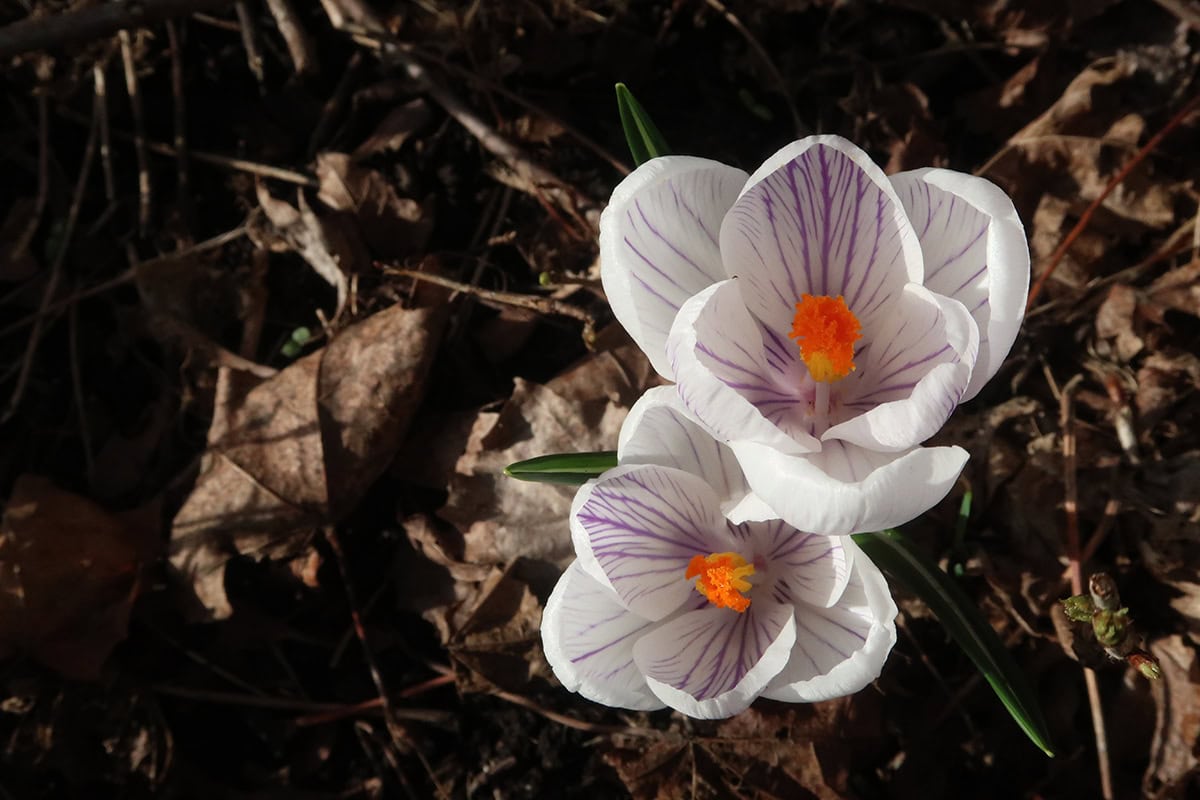
Crocuses are often the first thing to bloom in spring, sometimes pushing right through the snow in purple, yellow, or white.
Plant in fall or early winter in sunny, well-drained spots. They naturalize well in lawns, rock gardens, or borders.
Low-maintenance once established. Let foliage fade on its own to feed the bulbs for next year.
Grape Hyacinths (Muscari)
Grape hyacinths form carpets of tiny blue, grape-like flowers in spring and spread easily over time.
Plant bulbs in fall or early winter in sun or partial shade. They’re not picky, but drainage matters.
They look best in big drifts. Once they take hold, they’re about as easy as it gets—just let them do their thing year after year.
Snowdrops (Galanthus)
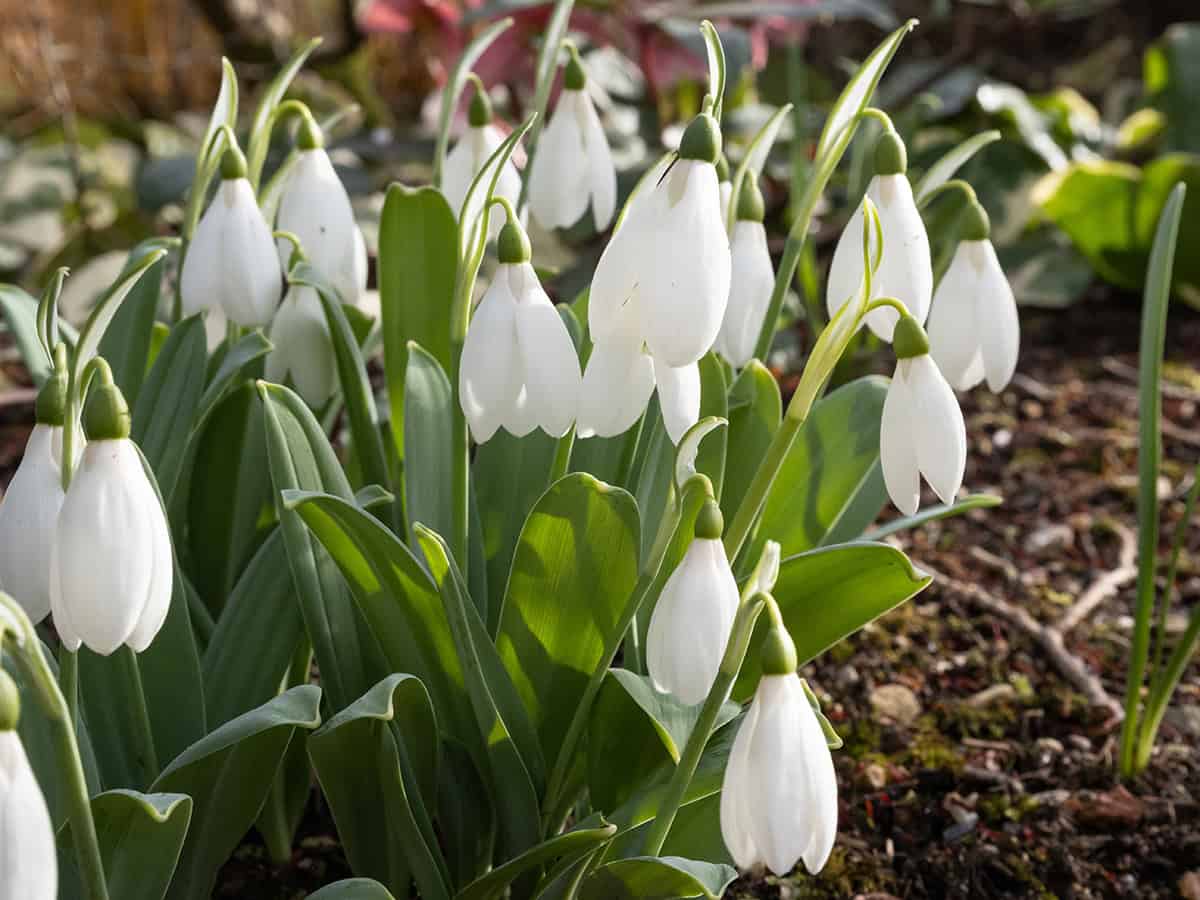
These little blooms sometimes poke right through the last patches of snow in late winter, their white, drooping flowers hinting that the cold months are almost over.
Bulbs go in the ground during fall or early winter—just make sure the soil drains well and stays a bit moist. Dappled shade works best, so tucking them beneath trees or shrubs is a solid move.
If you leave them alone, they’ll usually multiply on their own in cooler climates. Only bother dividing the clumps if you notice they’re not putting on much of a show anymore.
